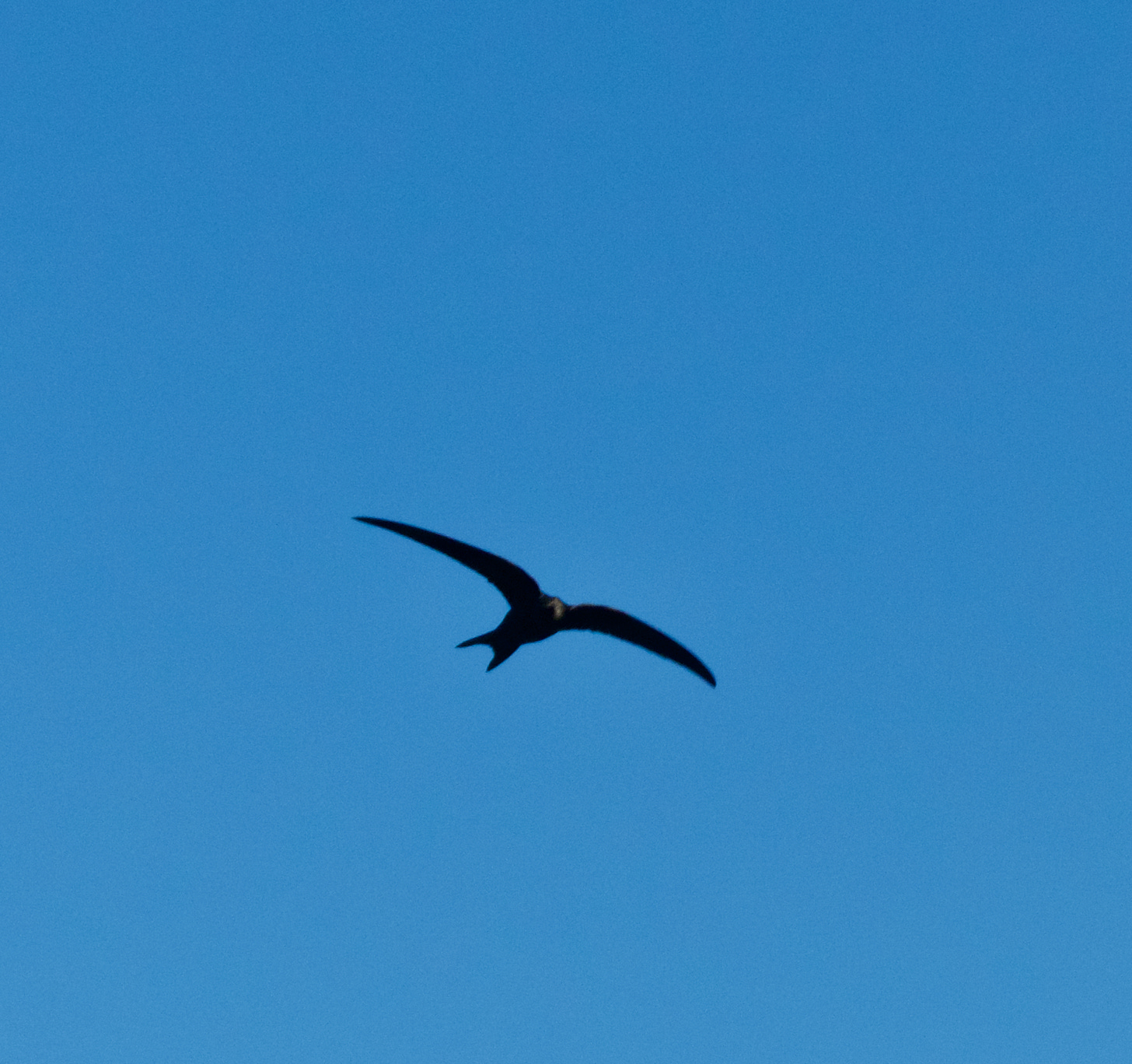They’ve been around for nearly a month, and still I fret.
The late-April fretting is par for the course. Will they have made the journey safely? Will they arrive on time? Will I ever see them again?
But I’m not used to the late-May fretting. It’s of a different order. Because usually, a few days after they return, and having completed the standard ‘just back from the holidays’ routine of dumping the bags in the hall and opening the backlog of mail and throwing away the rancid pint of milk in the fridge, the swifts get on with the reason they’ve returned – breeding.
Unless you’re lucky enough to catch a glimpse of them copulating in mid-flight – a brief but spectacular encounter that, on the few occasions I’ve witnessed it, has had me genuinely worried for the safety and sanity of both parties – this will take place out of sight. Two or three eggs will be laid, then incubated for 19 days (the parents share the incubation duties) – longer in cold weather. And then the development of the chicks begins, a process that includes their doing push-ups on their wings to develop the necessary strength for their almost entirely airborne lives. In a warm summer, with abundant insects to feed them up, they might be ready to go in under six weeks; in more challenging years it will take as long as eight.
This, you may not be entirely surprised to learn, shows every sign of being a challenging year. Hence the fretting.
It’s been cool, the relentless north-easterly winds ensuring that while warmth has at last arrived, a little shiver is never far away if the sun dips behind the clouds for a bit (which it tends to do just as I’ve set myself up in the garden and taken my jumper off). And the upshot has been (I think it’s the reason, in any case) that the swifts have been slow to commit. They’ve been around, for sure, often wheeling around at medium height, jinking and swooping and waggling wings – the usual palaver, and wonderfully diverting it is, too.
But normally they treat us to screaming fly-pasts – five or six birds squeeing excitedly around at eaves-height in the early evening. This is a sure sign that they’re checking out the nest site under your eaves with a view to using it, as well as one of the glories of May (which, as Monty Don observes here, is an intrinsically glorious month), and they have been notable for their absence.
“When I die I shall go to May. It will be green.”
Until Sunday.
On Sunday evening two of them did a fly-round at tree height, descending in a slow, broad arc. We traced their path, round behind the Cedar of Lebanon next door and looping back to bring them towards us, close enough that we could hear the whoosh of displaced air. Whizz. Whee. Squee.
And then, so quickly you would have missed it if you’d glanced away for even a millisecond, there was but one. The other had nipped up, with extraordinary agility, into the little gap under the eaves, wriggled in and snuggled down, its presence there only discernible from the occasional answering sub-squee as its partner whizzed past the nest, calling, I presume, to check everything was ok.
Within 45 minutes, the other two pairs, who had obviously been hanging around waiting for the others to take the lead, had followed suit.
Aaaannnnddd relax. For now.
Jonathan Pomroy is as keen an observer of swifts as you could hope for.
There’s been a steady trickle of books on swifts in recent years, all excellent and informative.
Charles Foster’s The Screaming Sky.
And the latest addition, Mark Cocker’s One Midsummer’s Day.
I, too, have fallen into the trap of writing about them, but they only get half a chapter in Taking Flight.





Lev
Re swifts, I saw the first three in Stratford on Avon on 15 May, above the town centre.
FT
Incredible, I love swifts, they are amazing creatures. Thanks